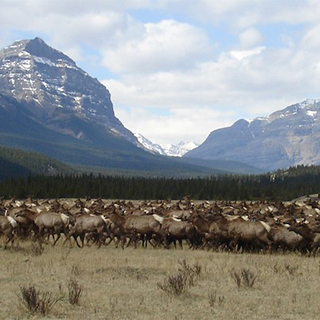Prospective Students
New Students
I am not planning on considering any new graduate students in Academic year 2022/23 or even for Academic year starting Fall 2023/24. My main focus for the next 5 years will be my two NSF-funded projects on elk and caribou, and these have no additional funds for additional graduate students. Enterprising and self-funded graduate students (e.g., NSF-GFRP) can always try their luck of course, and new opportunities occasionally emerge.
General Graduate School Advice
Regardless of my lab being generally full for the forseeable future, please read on if you are interested in finding out some general advice about getting involved with graduate research in my lab, and general advice on graduate school in general.
There are generally two ways to get into graduate school, especially if your interests are to work on expensive-to-study large mammals such as ungulates and their predators, such as I do. First, find an advisor with existing projects that have funded graduate positions and at least partial funding for the expensive field activities. Second, enterprising and motivated students can develop graduate projects with employers such as government agencies, secure some funding, and then team up with an advisor to initiate the project. I strongly encourage exceptional students to apply for NSF's Predoctoral Fellowships. Both approaches are possible within my lab, and my philosophy is to allow students in any kind of project as much flexibility in developing their research questions and approaches (empirical, modeling, etc) within the bounds of existing projects within my lab.
In terms of the details, it is my general policy not to accept graduate students without student funding identified for at least most of the graduate degree. The Wildlife Biology Program can only support a limited number of students through TAships. Combined with the expense of conducting research on large scale ungulate ecology, I expect most of the graduate projects to be part of larger projects I have obtained at least initial funding for.
Also note the deadline for admission to a fall semester is January 15th of that same calendar year.
Keep in mind that there is a huge pool of exceptional students jockeying for positions in graduate schools. Over 150 students apply/year to the University of Montana Wildlife Biology Program, and generally only 10-15 are accepted. And the same rules that apply to writing letters to politicians apply to potential graduate school advisors in terms of the ranking of forms of correspondence: email <<< hard copy letter < phone calls < person-to-person meeting. With 50-100 emails in my inbox every day, don’t be dismayed with a form letter if you seek to get into graduate school by email alone.
Best of luck and thanks for your interest in my lab!
